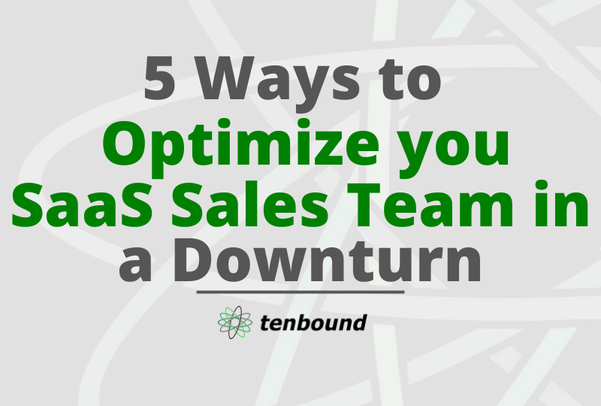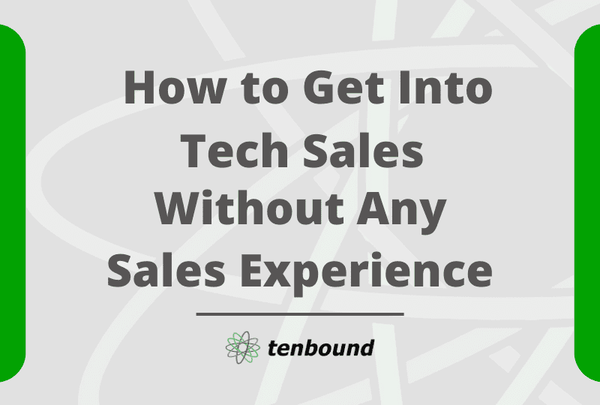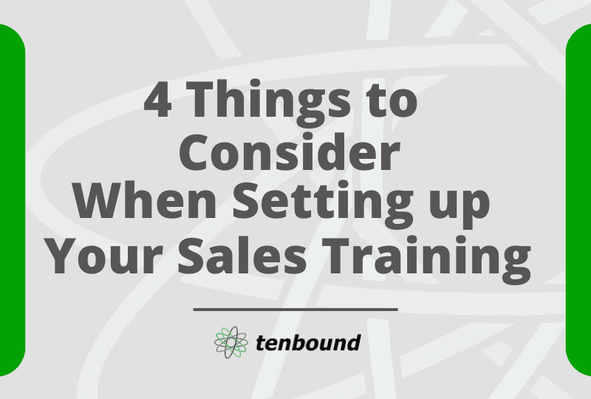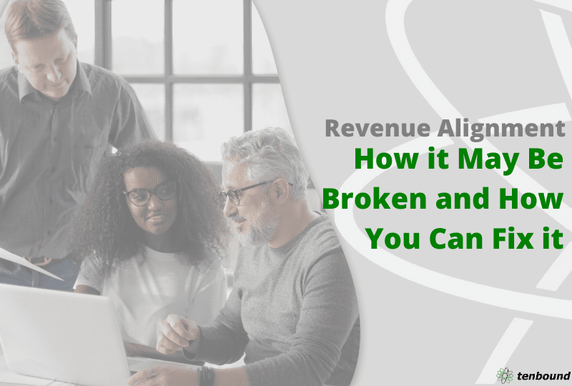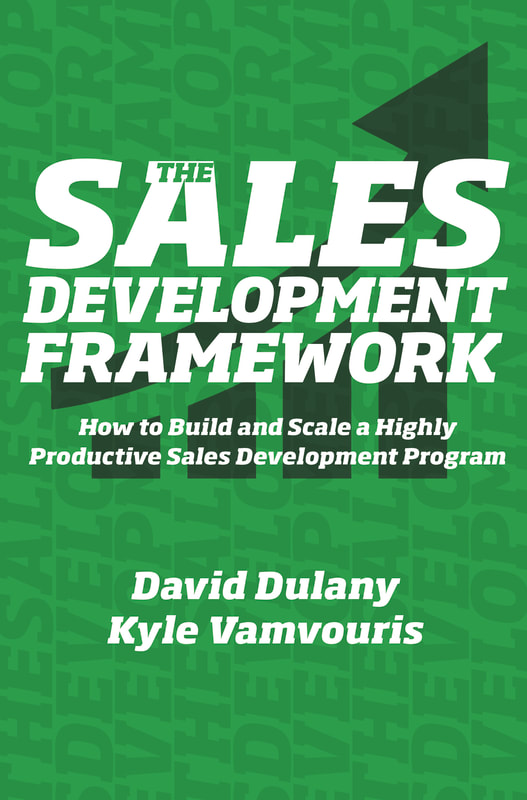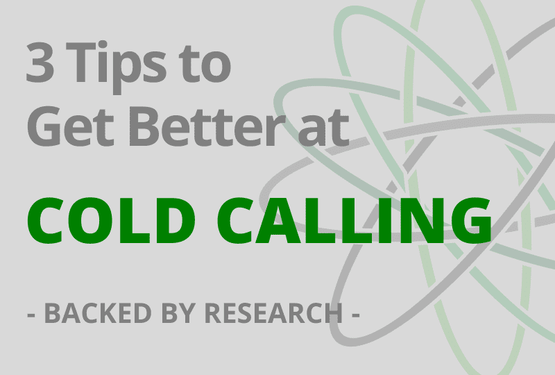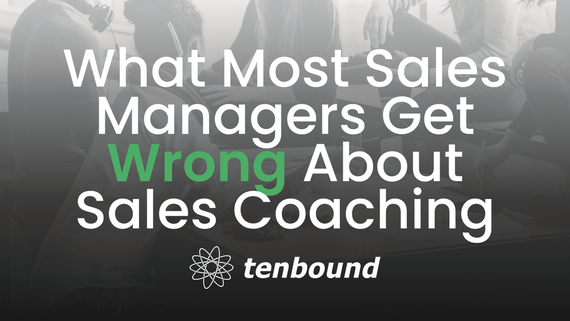Top 20 Paying SDR Teams in 2022
9/29/2022
Comments
There’s a reason that “breaking into tech” is trending right now. Aside from the flexibility and the growth potential, employees are attracted to high earning potential. Here we’ll share 20 companies that rank with some of the highest On target earnings (OTE). In previous years, SDR salaries varied greatly based on location, but because of the pandemic and remote work, we are starting to see a leveling across geographies (location is starting to have less of an impact on salary).
Notable mentions
This is just a starting point. While the OTE is high, it’s important to check to see what the average total compensation is and what percentage of reps are hitting quota. To investigate which company is performing well, check out our Free: Job Interview Questions Cheat Sheet for SDRS. This will help you think about some of the top questions that you can ask during an interview. Note: We’ve sourced this data publicly. This is just a starting point and doesn’t take into account seniority. Sources: https://compgauge.com/salaries/sdr/ https://salestrax.com/blog/companies-paying-software-salespeople-the-most Want to get into tech sales? Here’s how you do it...
Breaking into tech is not always easy, but it’s not impossible. While many believe that you need to have a technical background to be in tech, we’re here to tell you about a lesser known way to break into this industry. And the cool part is that you can access it without any previous experience. Yup, we are talking about tech sales. And don’t worry, it’s not the used car salesperson that you are used to thinking about when you think about sales. This is one of the faster growing job sectors in 2022. What is Tech Sales? Tech sales is generally seen as the sale of technology to other companies or customers. Most people often start their career in tech sales as a sales development representative or business development representative. These professionals will prospect for new clients and respond to inbound leads when they’re purchasing new products. They identify and create new businesses in addition to providing support for inbound inquiries. The day to day also includes cold calling and sending emails with the goal of qualifying customers and booking a meeting for the account executive. Huge demand As the tech industry grows, there’s a huge demand for non technical roles to support the marketing, sales and support of the customers. This is where the sales team comes into play. There is no shortage of sales jobs available now (despite all of the recent layoffs). We see the demand still being very high and the overall industry growing at an alarming rate. We are also seeing that tech sales continue to be a financially lucrative career path. While the average salary for a tech sales representative will vary, we see that the average starting salary for a sales development rep to be about $75,000. More than anything, because most tech companies are smaller, they offer a lot of opportunity for advancement and career growth. Now, let's transition into how to get started with your tech sales career. Updating Your Resume Just like any profession, you need to prepare a stellar resume for your job search. Updating your resume to match the company and role is always a given, no matter which industry you are in. However, in a tech sales job, you want to show transferable skills along with data driven successes. Most recruiters expect that you won't have any experience, so come prepared to tell your story based on the research you’ve done and why you want to transition into a tech sales career. If you feel like you need additional knowledge, you can always check out the different sales bootcamps and certifications around (some paid and some free). Working to complete one of these helps to signify that you are serious about breaking into tech and show a level of grit. Job Search Process Before you begin to submit your resume to companies, it’s important to know what type of companies you’d want to be a part of. You should be able to answer questions like these:
After you’ve gone through these questions, you should create a prospect list of companies you’d like to pitch. This way, you’ll be able to prioritize those you find the most attractive. The next step is to strategically reach out and network with these prospects without seeming desperate. You’ll also want to make sure that your LinkedIn profile is up to date so that employees take you seriously. Most companies have a referral fee. That means that the employee will get a referral bonus if they introduce a candidate to the company and they get the job. This is why networking is so important. Connect with employees on LinkedIn and join mutual group chats like on Twitter or mutual Slack groups (e.g Sales For The Culture,Vendition, SDReady, TenboundPlus) Interview Prep When preparing for your interview, one of the most important things you can do is investigate the company’s upcoming projects. Therefore, you’ll be prepared to provide valuable insights to the company on what products they can utilize to ensure their project’s success. At the basic level, be sure you know the CEO’s name. Furthermore, research relevant leadership teams and offer to reach out to them in order to provide relevant product information pertaining to their projects. If you’ve come prepared, you’re already off to an excellent start. Find out what kind of person the company is looking for in terms of traits and values. Understanding the company’s core values is a great place to start. You can take this one step further by practicing sharing what those core values mean to you. Nailing the Interview Remember, you’re still applying for a sales position so showcase your skills during the interview. Stay calm and keep control of the narrative. Teams love when you answer questions in a concise and articulate manner. Some managers value thoughtfulness, curiosity and grit. Teamwork is another major trait that is useful. Oftentimes these are asked about in behavioral interviews. These looks like; “tell me about a time when you. . .”. Feel free to go on that company’s Glassdoor page and research some of the top questions asked during interviews. Practice, practice, practice. More than anything, stay consistent with your search. Make a plan, seek out help, and learn as much as you can after each interview. Transitioning into tech won’t always be easy, but it can be worth it. These are proven steps that we’ve seen work over the last 5 years. If you are interested in learning more about the industry or want to check out an SDR course, take a look here. Most people don’t have a plan for their sales training. Here are four ways to fix that.
Companies spend over $70 billion on training and an average of $1,459 per salesperson annually. Yet, these trainings are nowhere as effective as leaders would like them to be. To increase effectiveness, retention, and performance, sales trainers should draw from the best practices of learning and design professionals. Here are four ways to incorporate better planning into your training:
Once you’ve identified the purpose of the training, it’s now time to ask yourself what kind of training it will be. To do this, you will need to decide the gap between where the sales reps are today compared to where you want them to be. For example, it could be a knowledge or skill gap. These are the most popular ones. Obviously, training to overcome a knowledge gap is much different from training to overcome a skill gap. Lastly, in this early phase, you want to clearly state, in two sentences or less, the desired outcome of the training. You should be able to fill in the blank here: “After the end of the training, the reps will be able to __________________.” 2. Plan the content and flow of the training After you’ve decided on the purpose of the training, the gap you want to cover, and the desired outcome, now it’s time to put the content together. The first step to doing this is to brainstorm the resources that you or your reps may need. Are there worksheets, videos, or templates that you already have, that you can leverage? And if not, does it make sense to build these out? Are there other people within your organization that might have insights into what else might be needed for the training? It could be your enablement person, your marketing team, or even your reps. Leverage the different stakeholders to start getting buy-in with the training. You’ll then want to consider the best format for the training. This is very important because the training methods will change depending on if it’s in person, virtual or hybrid. Think about your content and how it might be effective depending on the medium. Live role play is often way more engaging in person. On-screen polls are great in a virtual/hybrid environment. Attention span is way shorter online, and trainees get more easily distracted. These are all things to consider when planning the content. We’ve seen that when you think about these things and try your best to incorporate them into your training design, then your content will be more effective. A tip that we use regularly is to complete half the training, then share it with other stakeholders to get feedback. This way, you get early feedback before you get too far into the completed program. 3. Training time On the training day, always ensure you have the necessary equipment. There’s nothing worse than having a “technical difficulty”. This could delay the training and put the attendees in the wrong frame of mind. Before you begin, you’ll want to set the stage. In fact, we recommend sending out at least two notices ten days before the event. This should include the proposed agenda and learning objectives. This is a great way to start getting buy-in. You’ll always want to think about how you’ll keep the trainees engaged. What questions will you ask? What breakout sessions will you have? What polls might you do? Again, this all depends on the learning gap that you are trying to bridge. It’s best to take some time beforehand to think about your audience. If you know everyone in the group, you’ll generally have a good idea of the sales reps who will overshadow and have a tendency to take over the meeting, compared to the reps who never talk during group meetings. It’s essential to figure this out if you require engagement from the entire group. Always optimize for retention. How you present the information and the type of engagement you decide on, should always be optimized to help the reps retain as much of the training material as possible. 4. Solidify learnings Speaking of retention, before you show up on the training day, take a few minutes to think about how you will test the effectiveness of your training. In other words, how will you know if your training accomplished what you set out to accomplish? For most people, you might see an increase in sales or an increase in pipeline generated. But those might take a long time to see. The best way to see how effective the training was, is to test to see whether there’s a change in behavior with the reps. If it’s a knowledge gap that you were trying to fill, you could use a simple quiz. If it’s a skill gap, you could do role plays or “ride along” on sales calls. We see too much training that has no follow-up. At the end of the day, this is what truly matters; Did the training benefit your team the way you wanted it to, and did you have a way to verify that? If you are interested in learning more about how to plan an effective sales training session, check out our Free Sales Training Checklist here: Sales Training Checklist You see it all the time. The CEO has a vision and OKRs for the company, yet John on the Customer Success team doesn't know how it matters to his role.
It’s like the sales leader who is asking for more marketing-sponsored webinars and events, while the marketing team is more focused on traditional collateral like one pagers, Google ads, and pitch decks. Each department goes off pursuing its individual goals, only ever sharing results at the end of the quarter. And then it’s too late to make adjustments. These companies should start to consider making structural changes that better align the organization around a single source of truth and shared goals. But how? What is Revenue Alignment? In our recent article highlighting common themes from our upcoming conference, we leverage John Moore’s definition of Revenue alignment as “a customer-centered approach to business success. It places a bonus on creating measurable outcomes, delivering solutions that customers adopt, and a high degree of collaboration between customer-facing teams.” Here we will dive a bit deeper into the importance of revenue alignment, some pitfalls to avoid, and a couple of ways to fix them. The goal of revenue alignment is to improve the customer experience your customer receives from your team from start to finish. As you can imagine, this involves sales leaders, marketing, customer success, HR, Finance, and enablement. Each company must work really hard to remove any friction in the process. As we’ve noted, greater alignment across the organization shows great benefit. Research showed that organizations that “maintain a focus on alignment achieve up to 19% faster revenue growth and up to 15% higher profitability.” Unfortunately, few teams ever get there. Based on our research, here are some ways that prevent companies from getting the revenue growth that they desire. Problems of revenue mis-alignment:
The good news is that there is hope. We’ve seen some companies turn things around in just a week. While we can’t promise such a fast result, we can help you on your journey of revenue alignment. And yes, this will always be a process, a journey, and not a one-time event. How are some ways to align your revenue teams:
As we’ve shown, aligning your revenue teams can provide a huge lift in profitability. As teams struggle with data and organizational silos, misalignment will result in a negative impact on productivity and, ultimately, revenue growth. To learn more about how to start this process for your team, come join some of the Top Minds in Revenue Alignment on September 8th at Tenbound’s next Virtual Conference! At this free event, we’ll cover everything you need to rev up your cross-functional, go-to-market teams by synchronizing pipeline and revenue generation. Attendees will learn from top names in the industry on a strategic and tactical level how to actually do Revenue Alignment vs just talking about it. Focusing on alignment can increase pipeline and revenue, and enhance their careers as revenue professionals. For more info and free registration click here. In The Sales Development Framework, David Dulany and Kyle Vamvouris lay out a proven approach detailing how to start, lead, manage, and accelerate your Sales Development program.
Whether you are a seasoned executive who needs to jumpstart an existing program, a Manager running a team, an aspiring Team Lead, or a Sales Development Representative (SDR) who wants to step into a leadership role, this book will help you develop a course for success with your team, in your company, and your career! If you feel like you have room to improve when making calls, you are not alone. That's why we dug into the research and found three ways to help you get more conversations and book more meetings within 48 hours.
But before we jump in, let's take a look at some numbers that highlight the importance of cold calling. While the average success rate for cold calls is around 2%, businesses continue to see some of their larger deals coming from this channel. According to RAIN Group,
This is great news for all SDRs looking to make an impact in their org. Now let's dive in. Here are 3 tips for mastering the phones and booking more meetings. 1. Prepare, Prepare, Prepare We’ve seen that confidence goes up the more you are prepared. Being prepared starts with knowing your prospect, what value you bring to them and what you will say at the top of the call. Gong analyzed over 90,000 calls and found that one of the most effective opening lines is “how have you been?” Focus on rehearsing your call openers - this is something that you can control. It’s also essential to prepare common objection handling responses. Most sales objections fall into a few common categories. Learn them, practice them and be ready to handle them when they come up. Practice with your manager, your teammates, and by yourself. Listen to call records and be intentional while you practice. This is a sure way to get ready for when that executive picks up the phone. 2. Work on your communication skills Great communicators tend to have an advantage in sales. Luckily for you, we’ve seen two areas that you can work on that will change your calls overnight. Practice asking open-ended questions: Let’s start by focusing on mastering the art of asking open-ended questions. These questions move away from a Yes or No answer while nudging the prospect to open up and share more details as we engage them on the call. Open-ended questions usually start with ‘who,’ ‘what,’ ‘where,’ ‘when,’ and ‘how.’ Improving your question-asking skills also benefits you because the person asking the questions is generally the one controlling the conversation. Practice active listening: After you’ve mastered asking the right questions, you can now focus on active listening. Active listening is not about being silent and waiting to respond. It’s about being attentive to what the prospect is saying while trying to understand the emotions behind the words. It’s a form of listening that involves asking clarifying questions. Key ways to improve include; listening with the intent to understand; avoiding the temptation to interrupt; and repeating and paraphrasing what you heard to move the conversation forward. 3. Call at the correct time It’ll be pretty hard to work on improving your calls if you aren’t having any conversations. Calling at the correct day/time is one of the best ways to increase your connection rate. According to Yesware’s research on over 25,000 sales calls, weekday afternoons are the best time to make cold calls. The research shows that most calls that last over 5 minutes occur between 3:00-5:00 pm on Tuesdays or Thursdays. There’s a time and day that works for your prospect. Look at the data in your sales engagement platform and work to iterate from there. We hope these three tips help you book more meetings. Take 15 mins today to work on these three tips. Start here and keep testing. Keep improving! Found this helpful? Hundreds of companies turn to Tenbound to discuss SDR/BDR strategies and best practices. Learn more here. When SDR teams use gifting as an outreach strategy, there are three typical outcomes:
High-impact gifts get posted on LinkedIn and are cheered on by teams that wish they thought of the idea. They start sales conversations and carry the relationship through the buyer’s journey. Negative-impact gifts do the opposite. They are perceived as bribery, attention-begging, and drive prospects to unsubscribe. They sound like; “We’re offering you a gift in return for your time.” And translate to; “We have no value for you, so we hope this gift compensates.” [caption id="attachment_121335" align="aligncenter" width="422"] High-Impact Gift Example[/caption]So what’s the difference between high-impact gifting and negative-impact gifting? The Golden Rule of Gift Outreach: Gifts get positive responses when they are personalized AND tie back to the relevant value of your offering. Step-by-Step Email Gifting Framework:
Hi (first name), Personalization: Noticed you’re interested in (personalization from LinkedIn content/Google search/personal blog/social media). Value: I’m reaching out because I wanted to show you how our (solution) helps with (value proposition). Tie-Back: Just like your (hobby/interest), it will (tie back to value). Gift Offer: Sending you this (gift) for (personalized reason). Use this link to confirm shipping. Call-to-action: Can I get 25 minutes on your calendar next week to learn more about you and your team to see if there’s a fit? *Picture (optional)* Talk soon, Giano 5 Examples Based on Category and Title:
Example 1: Revenue Intelligence (Ex: Gong, Chorus AI) Prospect: VP of Sales Interests: Likes Golf updates on Twitter Hi (first name), Personalization: Was doing some research and noticed you’re into golf. Bet you’re looking forward to the heat in Phoenix ending as much as I am. Value: Reaching out because I wanted to show you how our solution helps sales teams close more deals by automating recording, taking notes and giving valuable feedback to your team during the sales cycle. Tie-Back: Just like when you hit the links. You need to know your course to hit a respectable score. Gift Offer: Sending you a pack of Callaways on us for your next round. Use this link to confirm. Call-to-action: Can I get 25 minutes on your calendar next week to learn more about you and your team to see if we’d be a fit? Example 2: Product Analytics (Ex: Mixpanel, Amplitude Analytics) Prospect: VP of Product Interests: Posted on LinkedIn about a newborn baby Hi (first name), Personalization: Was doing some research and saw you just added a new member to your family. Congrats! Value: I’m reaching out because I wanted to show you how our solution gives visibility into user behavior to understand what drives impact and continuously innovate your product. Tie-Back: As a new parent, I’m sure you understand how important it is to always understand behaviors and adjust for what’s coming next. Gift Offer: With that in mind, I’m sending you some teething toys on us as a congratulations (and to help you keep the little one occupied). Call-to-action: Can we connect for 25 minutes next week so I can learn more about your team to see if we’d add value to your process? Example3: HR Software (Ex: ADP, Gusto) Prospect: Director of HR Interests: “Lover of Dogs” in LinkedIn bio Hi (first name), Personalization: Noticed in your bio that you’re a dog lover. Great Danes are my favorite, what’s yours? Value: Reaching out because I wanted to show you how our solution helps HR teams manage their staff, reduce errors and improve business efficiency. Tie-Back: As a Dog lover, I’m sure you understand why your people need the proper training, management and organization to keep those tails wagging during the work day. Gift Offer: Which reminds me, treat your pup to some toys on me. Hope you and your best friend love it. Link here to confirm shipping. Call-to-action: Thought we could connect for 25 minutes to share more about your current system and see if we can add value. What does your availability look like next week? Example 4: Project Management (Ex: Smartsheet, Asana) Prospect: VP of Operations Interests: Has a personal blog where they write about industry news and mentions Football in their bio. (first name), Personalization: Was reading up on (company name) and came across your personal blog about (blank). Value: Wanted to reach out because I noticed how important (use case) is to you and thought you’d be interested in how our platform helps teams increase productivity by 20% with an effective and collaborative workspace. Tie-Back: Also, noticed you’re a football fan, so I’m sure you understand how important communication is for execution on the field. Gift Offer: Sending you this (football team) tumbler as a cheers. Use this link for secure shipping. Call-to-action: Do you have availability next week to connect for 25 minutes so we can learn more about your team and see if there’s a fit? Example 5:Cyber Security (Ex: McAfee, Symantec) Prospect: Chief Information Security Officer Interests: Very private, doesn’t post much. (first name), Personalization: Reaching out because Option 1 - Name drop: because we work with company 1 and company 2 to help and they’re seeing success with… Option 2 - Case study/content reference: because we just published this case study about how we helped (company name) with (use case) and I thought you’d be interested. Option 3 - Work tenure: I saw you’ve been with (company name) for 10 years and thought you’d be the best person to have a valuable conversation about (use case). Value: We help teams automate VPN usage and monitor user identity to protect against unsafe networks. Tie-Back: As you know, keeping your company safe is a thankless job that often goes unnoticed when things are running smooth. Gift Offer: So as a thank you for everything you do, I’m sending you this mug, on me. You’ll receive a separate email from our gifting vendor for SOC-2 compliant shipping. Call-to-action: Thought it would be worth a chat to learn about how you’re doing things and if we can add value. Interested in learning more? FAQ: Who should I send gifts to? Think of gifting outreach like gifting in real life. You don’t give gifts to just anybody for just any reason, right? Save your budget for maximum impact with high-value targets. Where in my cadence should I use gifting as a touchpoint? Short answer: Depends. If your audience is open to creative outreach, I recommend using gifting in the first email touchpoint to make yourself memorable and then follow up from there. Example: Marketing, Sales, Human Resources If your audience is hesitant to accept gifts for certain business reasons, it might make sense to only offer gifts when familiarity is established. Example: Healthcare, Cybersecurity, Finance What if I can’t find anything personal about them? Option 1: Talk to your gifting platform team about specialty gifts that appeal to your general audience (see appreciation mug in example 5). Option 2: Use a different channel like calls or emails. You’re on a limited budget. Where can I find something personal about my prospects? Most SDRs aren’t making it a priority to dig into hobbies and interests. And most are surprised how much they can find when they actually look.
Will prospects think it’s unprofessional to look at their personal information? People who publish public content appreciate it when people take the time to read it! If someone responds negatively, they probably aren’t a fit anyways. With that said, be respectful of personal profiles like Facebook and Instagram. Final thoughts: Gifting is the BEST way to break through the digital noise, stand out and establish a relationship. Just never forget the Golden Rule. Gifts get positive responses when they are personalized AND tie back to the relevant value of your offering. Interested in learning more about gifting outreach? Follow Linkedin.com/in/gianofiore. Most sales managers get sales coaching wrong. They think that if they just tell their reps to sell more, it will magically happen. The truth is, there’s so much that goes into improving a rep's performance.
Recently, David Dulany sat down with Peter Kazanjy, Co-Founder and CRO at Atrium. If you’ve heard Peter speak, you should know that this interview was jam-packed with insights. This episode was specially geared towards sales AE/SDR managers. According to Kazanjy, data capture in cloud CRMs has improved in the last five years, allowing companies like Atrium to provide more nuanced and better data-driven coaching conversations with their reps. He stressed that as a manager, your job is to help your reps be better. This is one of the only ways to get your team’s opportunity count to increase. Therefore, having a tool like Atrium that can provide individual insights, will far supersede a non data driven approach. Previously, managers would give vague feedback to help grow the opportunity count. Feedback such as “make more calls” or “ close more deals.” I’m sure you agree that this can be frustrating as a rep. Kazanjy offers a more nuanced approach based on the newly available data. Instead of a broad coaching cue like “close more deals,” you can get as nuanced as saying “Do you see how your un-touch opportunity level is way higher than everyone on the team? This is an indication of an improper hygiene pipeline. Which is indicative of too many opps, or not having space on your calendar to handle those meetings. Let's work together to reduce the number of opps in your pipeline or make space on your calendar.” As you can see, the conversation becomes way more actionable and specific to the rep. As we have been working in this hybrid/remote environment, it’s obvious to see which feedback would be more effective. Having data-driven conversations One thing highlighted here is that it isn’t enough to have the data. As managers, we need to be equipped to have constructive conversations with the data we’ve been given. Most reps get promoted after two years. Unfortunately, as companies move fast, that means that they didn’t receive sufficient training to handle sensitive conversations. Kazanjy now hosts monthly meetings with managers (customers and prospects) to teach them how to implement the data insights into their coaching conversations. Topics include:
Automate as much as possible To have data-driven coaching conversations, you want to ensure that you have data you can count on. Luckily for you as a manager, so many companies are now working towards standardizing and automating the data entry process. Reps have struggled with this over the years, so whenever possible, Peter advises automating data capture as much as possible. Everything from calls to emails and even calendar invites. No surprise here, but this also requires having meaningful discussions with your team. Peter and his team noticed that the more you require your team to log things, the less people will generally want to do it. At the end of the day, if you are going to require reps to log activities manually, try your best to make it as easy as possible. He’s gone as far as implementing Salesforce flows to make the process as easy to execute as possible. Discovery is not just for sales Kazanjy and his team have been having data driven conversations even before he started Atrium. As a founder, he needed a way to do customer interviews without having any product. Having found an interview style called “Get in the van” by Michael Sippey , he went on to have over 150 conversations about how managers at companies were equipped to have data-driven conversations. Conversations ranged from asking about the current state of the organization's resources while revealing the unmet need that Atrium could meet. If you want to dive deeper, check out the episode here. Check out Peter Kazanjy on Linkedin. And don’t forget, Tenbound is having our Revenue Alignment conference on September 8. If you are a revenue leader who wants to ensure that your entire org is aligned with the right data and goals, then this conference is for you. |
Blog Archives
November 2023
September 2023
December 2022
November 2022
October 2022
September 2022
August 2022
July 2022
June 2022
May 2022
February 2022
January 2022
December 2021
November 2021
October 2021
September 2021
July 2021
June 2021
May 2021
February 2021
January 2021
October 2020
September 2020
June 2020
May 2020
April 2020
March 2020
January 2020
December 2019
November 2019
September 2019
August 2019
June 2019
May 2019
March 2019
February 2019
November 2018
October 2018
July 2018
April 2018
March 2018
February 2018
November 2017
October 2017
September 2017
June 2017
May 2017
April 2017
March 2017
February 2017
January 2017
September 2016
August 2016
May 2016
September 2015
March 2015
February 2015
January 2015
Categories
All
Book
Boost Sales
Career
Coaching
Cold Calling
Communities
Conference
COVID-19
Infographic
Job
Leaders
Leads
Management
Market
Outsourcing
Pandemic
Podcast
Psychographics
Sales Development
SDR
Seminar
Social Media
Team
Technology
Trade Shows
Training
Trends
|

